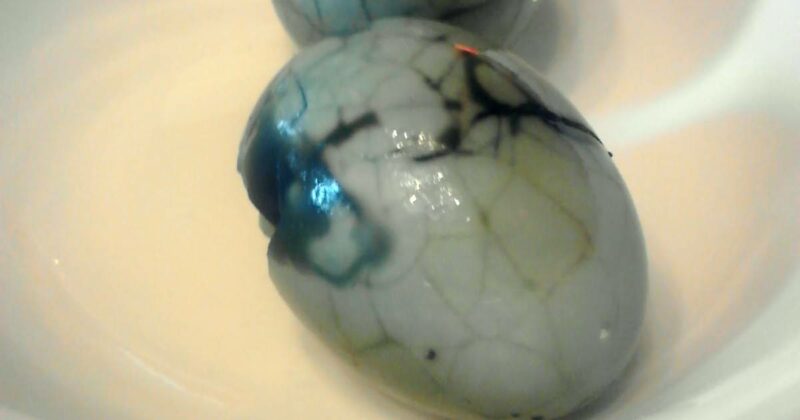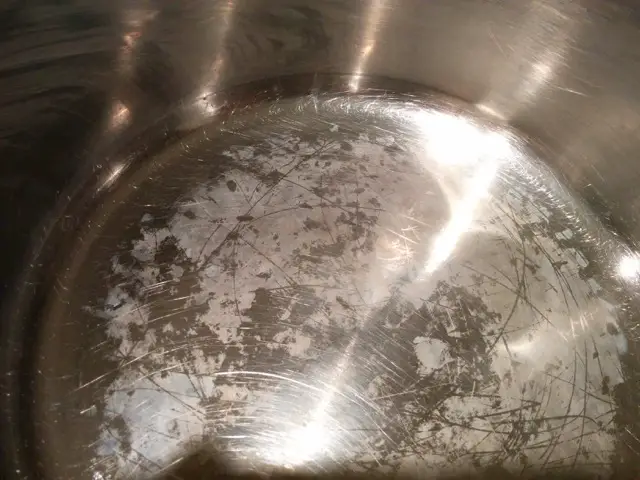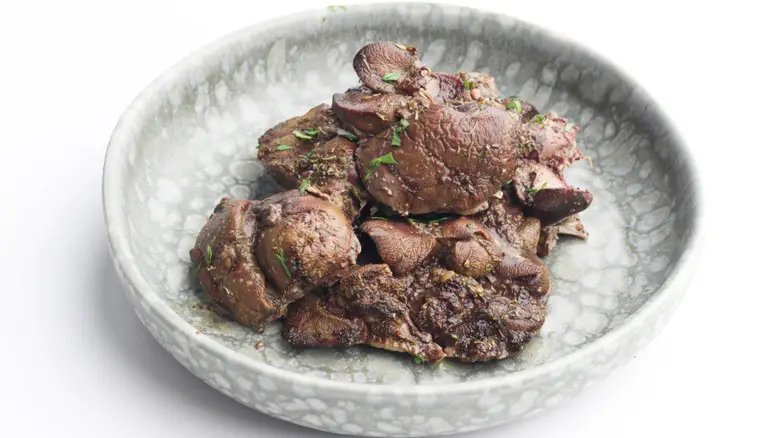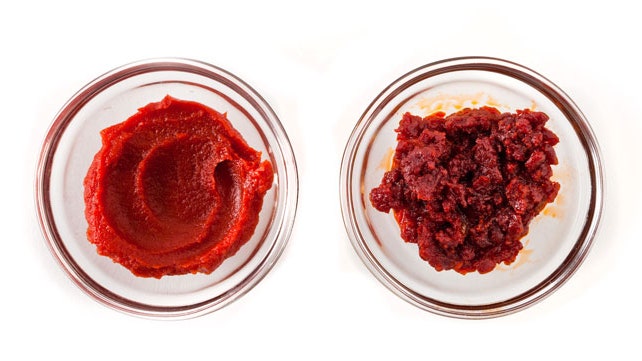The Visual Characteristics of Boiled Rotten Eggs
Rotten eggs can be absolutely revolting. The putrid odor is bad enough, but when you boil a rotten egg, the visuals can be even more disgusting and off-putting. However, examining a boiled rotten egg closely can reveal a lot about the science of rotting. Read on for a deep dive into the visual characteristics of boiled rotten eggs.
1. The Shell Cracks and Peels Away
One of the first things you’ll notice when boiling a rotten egg is that the shell becomes fragile and brittle. As the egg rots from the inside out, gases build up inside the egg. This gas buildup puts pressure on the shell, causing it to crack in places.
Boiling a rotten egg accelerates the cracking process. As the egg heats up, the pressure inside continues to increase. This often causes more cracks or even large chunks of the shell to peel off completely.
So if you boil a rotten egg, expect to see major cracks, flaking, and peeling of the shell. The shell loses its hardness and durability during the rotting process.
2. The White Becomes More Translucent
A fresh boiled egg has an opaque white. But as an egg starts rotting, the white becomes more translucent and clear.
This is because the proteins start breaking down through the rotting process. The egg white is mostly made of water and proteins. As those proteins degrade thanks to bacteria and enzymes, the whites don’t maintain that dense, opaque quality anymore.
When you boil a rotten egg, the whites will look partially gel-like but also watery and transparent. Imagine the whites of a very undercooked poached egg. That’s sort of what the whites of a boiled rotten egg will resemble.
3. The Yolk Flattens and May Turn Greenish
The yolk of a fresh hard boiled egg is round and bright yellow-orange. But the yolk of a rotten boiled egg? Not so much.
As a rotten egg is boiled, the yolk often flattens out and even takes on a greenish tinge. This is due to sulfur compounds mixing with the iron in the yolk. It’s the same process that causes greenish yolks in very old unrotted eggs.
The high heat of boiling can accelerate this reaction in a rotten egg, leading to a dull greenish-grey yolk that may even look powdery or chalky. That lush orange yolk color definitely won’t be present!
4. The Odor Worsens When Cut Open
Rotten eggs smell bad even with the shell intact. But cracking one open takes the odor to a whole new level.
When you cut or peel open a boiled rotten egg, sulfur compounds that were contained within the shell are released into the air. This leads to a major assault on your sense of smell.
The stench of a rotten boiled egg can be so nauseating that it’s hard to examine it further. You might have to run out of the room holding your nose before inspecting the visual characteristics.
So make sure to crack your rotten boiled egg in a well-ventilated area or outside. And maybe keep some lemon juice handy to sniff after getting a whiff of the insides.
5. The Texture May Be Dry and Crumbly
A fresh hard boiled egg has a dense, tender texture. The whites are gelatinous and the yolk is creamy. But rotten boiled eggs are a different story texture-wise.
As the egg rots, moisture is lost while bacterial waste builds up. This can lead to the egg having a dry, grainy texture when boiled.
Instead of being smooth and tender, the yolk will often be chalky and crumbly. The whites may be dry and fall apart easily rather than having that smooth gel-like texture.
Texture is one of the biggest indicators of rottenness when boiling an egg. The drier and crumblier it seems, the further along the rotting process it is.
6. Portions May Be Fuzzy or Moldy
If rot and bacteria have advanced far enough, you may see actual mold and fungi when peeling off the shell.
Fuzzy splotches of grey, black, yellow, or green mold may be interspersed on the egg white or yolk. It’s even possible for mold to spread in webbing patterns throughout parts of the egg.
This fuzzy mold is caused by fungal colonies taking root as the egg decomposes. Boiling the egg kills active mold spores but doesn’t eliminate the visual evidence that they were there.
Seeing mold on a boiled rotten egg is a sign it was already in an extremely decayed state before going into the pot. The mold and fungi were already well on their way to breaking down the egg interior.
7. It May Contain Dark Streaks or Spots
As an egg becomes rotten, the yolk and white can start to show dark grey, black, or brown streaks and spots. These are concentrated bits of bacterial waste and decomposition.
When boiled, these dark streaks and spots become more defined and solidified within the egg. They are visual clues that colonies of harmful bacteria were present and actively rotting the egg before cooking.
If you cut into a boiled rotten egg and see dark veins or spots, it’s a definite sign advanced rotting was underway. Seeing those dark bits means the egg was not just old but actively decaying and spoiled.
8. Portions May Be Entirely Liquefied
Extremely rotten eggs may have portions that are partially or entirely liquefied, even before boiling. This is because proteins and fats have fully broken down into liquids.
Boiling a rotten egg can often finish off the liquefying process. Any parts that were already liquefying will turn fully liquid when heated.
This means you may cut into a boiled rotten egg to find liquid yolk or whites that pour out like a viscous brown fluid. It’s an obvious sign the egg was already well into the rotting process.
At this liquified rotten stage, the egg will be far beyond salvaging for any cooking use even if boiled. It’s decomposed too far and become an egg-shaped sack of bacterial waste liquid.
9. It Can Contain a Mix ofLiquid and Gas Pockets
Pathogenic bacteria produce sulfur-rich gasses as eggs rot. This gas can become trapped in pockets within the rotting egg white and yolk.
When you boil an egg that’s gone gassy from rot, these pockets of gas may expand and create a frothy texture. So you might find mixtures of froth and liquid when you cut into a boiled rotten egg.
The gas pockets also give the egg an overall swollen appearance. As well, the gas can create undesirable aromas when released from the pockets of the boiled rotten egg. So gas formation creates visuals, textures and smells that are all indicators of an egg gone bad.
10. The White May Pull Completely Away from the Shell
In a very rotten boiled egg, the egg white may actually detach completely from the shell when peeled. This is because the proteins keeping it attached have broken down extensively.
If the white pulls cleanly off the shell as a slimy, translucent mass not adhering at all, it’s a neon sign the egg was very far gone in rotting. Even very old eggs that haven’t rotted will still have whites that stick to the shell somewhat.
So if the boiled rotten egg white plops right out of the shell with zero resistance, you know extensive decomposition was at play. A clean detachment of white from shell equals an egg that was outright putrid before boiling.
11. There May Be Ruptures and Collapses
Very rotten eggs often rupture or collapse in spots as they are boiled. The high heat can cause extremely decayed areas of the white or yolk to burst.
So a boiled rotten egg may have depressions, cavities, holes, and sunken areas if the interior was very unstable and far into rotting already. These collapses and ruptures are caused by components that have broken down into liquid and gas.
Major ruptures and visible collapse points in a boiled rotten egg mean it was in a seriously decayed state rather than just being old and unappetizing. Proceed with caution if you see this level of structural instability.
12. The Smell Can Linger and Transfer
Here’s one final bit of advice on boiled rotten eggs: don’t boil them in a pot you ever plan to use again for cooking!
The rotten egg odor permeates porous materials like plastic, silicon, wood, and especially cloth. It will transfer to and cling onto anything you boil the rotten egg in or on.
Even after extensive cleaning, the noxious sulfur stench may linger in any kitchen items that made contact. It’s smart to use a dedicated small pot just for the rotten egg experiment so you don’t ruin your good cookware.
Be sure to dump out the rotten egg water far from your house. And aerate the kitchen quickly after as well, or the whole room may take on the nightmarish scent!
Conclusion
Boiling a rotten egg can be a highly unpleasant experiment, but it undeniably shows the visual impacts of decay in action. Just be prepared for fragility, discoloration, mold, rupture, and especially the pungent smells involved!
Hopefully this gives you an idea of how rotten eggs appear when boiled. The takeaway is they turn unappetizing in color, texture, structural integrity, and especially odor. So while it may be fascinating from a scientific perspective, the reality of boiling rotten eggs is rather nauseating.
Proceed with caution and plenty of ventilation if you dare try this smelly experiment yourself. And maybe keep some air freshener, clean clothes and strong soap on hand before you examine the grotesque visual characteristics of a boiled rotten egg up close!






